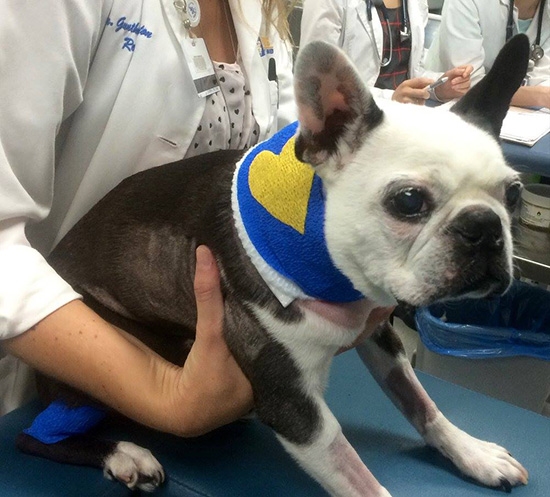Boston terrier receives pacemaker

Rocket is given some support after surgery.
The first canine patient to undergo pacemaker surgery did so in 1968, according to MSPCA-Angell, an international animal protection organization. Luckily, it wasn’t 10 years earlier. (In 1958, the first human patient had 26 different pacemakers in her lifetime!)
Today, pacemaker surgery is somewhat common in canines. Breeds that most often undergo such surgery include miniature schnauzers, West Highland white terriers, German shepherds, Labrador retrievers, cocker spaniels, and mixed breed dogs.
Rocket, a 10-year-old Boston terrier was one of the latest recipients, thanks to the University of California, Davis (UC Davis) Veterinary Medical Teaching Hospital, who performed the surgery on August 18.
UC Davis sources told NEWStat the patient appears to be “doing fine.”
Joshua Stern, DVM, PhD, DACVIM (Cardiology), Assistant Professor, PI: Stern Cardiac Genetics Laboratory, Resident Program Director: Chief of Service, initially diagnosed Rocket with a complete or 3rd degree atrioventricular (AV) block, and recommended a pacemaker. (Studies have shown that dogs with 3rd degree AV block are at high risk of sudden death.)
Rocket was placed under general anesthesia, and a transvenous, permanent pacemaker was placed with an external battery attached to it and secured under the skin and muscle of the right side of his neck.
The battery lifespan for a new device is 10+ years. Rocket’s pacemaker is set to deliver 80 beats per minute, with an upper limit of 160 beats per minute. The pacemaker will respond to Rocket’s activity level.
Photo courtesy of UC Davis



